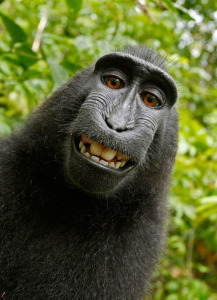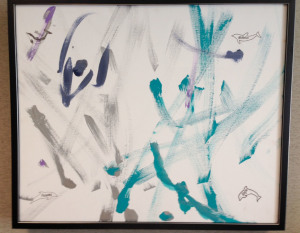News
Some of Our Clients are Animals
Really. Literally, not figuratively. When one thinks of “intellectual property”, probably the last thing you think about is this area of the law’s intersection with the animal kingdom. Yet, intersect it can and does.
Trademarks. When an animal’s human given name becomes associated with services or goods, that name has the capability of operating as a trademark. A brand, if you will. Often, these brands can be strong and valuable. Witness Lassie, Flipper, Secretariat and Grumpy Cat.
One of the firm’s clients is none other than Winter the Dolphin (via Clearwater Marine Aquarium). Winter’s story of survival and rehabilitation became an international phenomenon and lead to her starring role in Dolphin Tale and Dolphin Tale 2. With this notoriety comes commercial value necessitating the protection of Winter’s name. In conjunction with Clearwater Marine Aquarium’s merchandising and licensing programs, the Firm has secured multiple federal trademark registrations for Winter (Reg. Nos. 3,379,647, 3,560,280, 3,656,640, 4,654,947, 3,560,278, 3,396,402, 3,383,302) along with international trademark registrations. We encourage you to visit the Clearwater Marine Aquarium and say hello to one of our clients.
In similar fashion, the Firm represents Big Cat Rescue, a sanctuary for large felines rescued from abysmal conditions in roadside zoos and private captivity. Big Cat Rescue is dedicated to eradicating the domestic breeding of large cats such as tigers, jaguars, etc., and their resulting exploitation in the private sector.
Because of this advocacy, Big Cat Rescue has been subjected to malicious attacks by those profiting from the exploitation of these large cats. The firm has been honored to represent Big Cat Rescue in protecting and enforcing its brand name BIG CAT RESCUE® (Reg. No. 4,469,155) when opponents have sought to misappropriate the name in an effort to align and damage our client’s reputation. http://newsok.com/joe-exotic-ordered-to-pay-florida-animal-sanctuary-1-million/article/3760664
Copyright. Can an animal own a copyright? Certainly, the human who creates a painting or takes photograph is entitled to take copyright on their artistic work. But what if an animal paints or photographs?
Recently, an unusual case arose when a wild life photographer positioned a camera on a tripod in an Indonesian national park resulting in a female Macaque monkey manipulating the camera shutter and taking “selfies.” http://en.wikipedia.org/wiki/Monkey_selfie These selfies became an internet phenomenon and the photographer sought to protect the copyright in the photographs.
The photographer argued that his creative involvement in setting up the camera entitled him to copyright ownership. Copyright authorities in both the United Kingdom and the United States disagreed, concluding that animals cannot own copyright and – since the animal snapped the picture – it was the animal and not the photographer who created the image.
This differs from the situation both at Clearwater Marine Aquarium and Big Cat Rescue sanctuary where marine wildlife and large cats each work with humans to create paintings which are ultimately displayed and sold. Because of the human involvement in arranging the paints and controlling the canvasses, the resulting artistic expression on the canvas is copyrightable even though the paint strokes are delivered by the tiger’s paw or the dolphin’s fin.
Design Patent. The firm also represented a client in an interesting case seeking to enforce the design patent in a realistic sculpture of an alligator head used as a float on swimming pool thermometers and chlorinators. A competitor became enamored with our client’s product, purchased a number at a Pinch A Penny store and shipped them to China for replication. At trial, the competitor argued that our client could not own a design patent on a realistic alligator head sculpture since alligators exist in nature and cannot be monopolized through patent law. A true enough legal statement perhaps, but this argument fell flat with the jury when it was disclosed that the competitor’s “knock off” was an exact reproduction of our client’s sculpture even including our client’s fingerprint accidently incorporated into the mold. The jury’s $25 million plus verdict set the record straight. http://www.sptimes.com/2002/11/01/Business/Ruling_gives_little_g.shtml

